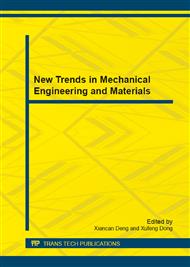p.314
p.318
p.323
p.329
p.334
p.338
p.342
p.346
p.351
Effect of Surface Treatment on the Morphology of Si3N4 Nanowires
Abstract:
The effect of surface treatment using polymer surface treating agent on the morphology of the Si3N4 nanowires was studied. The morphology, microstructure and surface chemical groups was characterized by using SEM, Granulometery, X-ray diffraction, Thermogravimetric analysis, diffuse reflectance infrared Fourier transform spectroscopy, The result s indicate that surface modify can not change the morphology of the nanowires. At the same time modifier on Si3N4 nanowire surface is chemical adsorption coating. Modifier coating occurred oxidative decomposition in 200-400oC
Info:
Periodical:
Pages:
334-337
Citation:
Online since:
December 2012
Authors:
Price:
Сopyright:
© 2013 Trans Tech Publications Ltd. All Rights Reserved
Share:
Citation:


